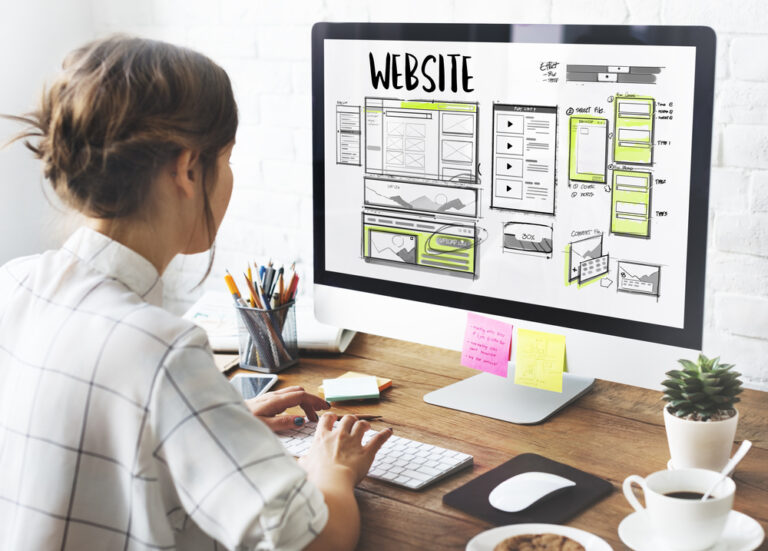WEB DESIGN & DEVELOPMENT
Web design and development refer to the process of creating and building websites. Web design involves conceptualizing the layout, visual elements, and user experience (UX) of a website. It focuses on aesthetics, functionality, and usability. Web development, on the other hand, involves the technical implementation of the design using programming languages like HTML, CSS, and JavaScript. It includes tasks such as coding, database integration, and server configuration to ensure the website functions properly across different browsers and devices. Both aspects are crucial in creating visually appealing, user-friendly, and functional websites.
WHY WEBSITES ARE IMPORTANT FOR BUSINESSES OR BRANDS?
- Online Presence
- Brand Credibility
- Marketing & Lead Generation
A website gives companies a digital presence and gives them access to a 24/7 worldwide audience. Customers may learn about and interact with the brand, goods, or services from any location thanks to its role as a virtual storefront.
The brand identity, values, and unique selling propositions are displayed on a website. It enables companies to set themselves apart from rivals and provide enduring brand experiences. Logos, colours, and fonts used consistently throughout the website help to promote brand loyalty and brand identification.
A website is an effective marketing tool that allows companies to advertise their goods and services, carry out campaigns, and gather leads. In order to reach and engage potential customers, it enables the integration of numerous marketing methods including search engine optimisation (SEO), content marketing, social media integration, and email marketing.
TYPES OF WEBSITES WE DESIGN & DEVELOP


WEBSITE DEVELOPMENT INCLUDES
PLANNING
Planning lays the groundwork for a successful website building process. It entails comprehending the project’s requirements, target market, and goals. This involves learning more about the features, goals, and content strategy of the website. The structure, navigation, and user flow of the website must be established at this stage. Making a sitemap and setting a development schedule are other planning tasks.
DESIGN
The aesthetic element of the website come to life during the design phase. To describe the website’s design, organisation, and user interface, designers provide wireframes and mockups. A significant focus is on user experience (UX), which ensures simple navigation, obvious calls to action, and aesthetically pleasing design. Additionally, designers choose text, graphics, and colour schemes that complement the brand and appeal to the target market.
Development
The design phase is completed, and then the development phase starts. The design is transformed into a working website by developers using coding languages like HTML, CSS, and JavaScript. They create the front end and back end of the website, including interactive features, forms, databases, and any necessary integrations. In this stage, the website must be responsive and compatible with a wide range of browsers and devices. Clean, well-structured code must also be written.
TESTING
Before the website goes live, testing is an essential step to find and address any problems. The usability, functionality, and compatibility of the website are tested across a range of browsers, mobile platforms, and screen sizes. Additionally, they check links, authenticate forms, and guarantee easy navigation. Performance testing is carried out to enhance responsiveness and loading times. A flawless user experience is made possible by the documentation and correction of any bugs, faults, or inconsistencies.
MAINTENANCE
Regular changes and enhancements are part of website maintenance, which is an ongoing activity. It entails introducing fresh material, updating previously published material, addressing defects, and implementing security updates. Monitoring website statistics increases user engagement and identifies opportunities for improvement. Regular backups, server management, and keeping abreast of technological advancements are all included in maintenance. The website is kept secure, functional, and in line with evolving business requirements through routine maintenance.
